In the concrete jungles of our modern world, nature finds a way to persist and even flourish. Urban environments, despite their noise, pollution, and limited green spaces, have become surprising havens for certain wild bird species. These avian adaptors have not only survived but thrived amid skyscrapers, traffic, and human activity. Their ability to adjust to city life demonstrates nature’s remarkable resilience and adaptability. From the ubiquitous pigeon to the surprisingly urban peregrine falcon, these 12 bird species have mastered the art of urban living, turning our cities into their own unique ecosystems and bringing wildlife encounters to millions of city dwellers worldwide.
Rock Pigeon The Ultimate Urban Survivor

The rock pigeon (Columba livia) stands as perhaps the most successful urban bird on the planet. Originally cliff-dwellers from Europe, North Africa, and parts of Asia, these birds found that city buildings perfectly mimic their natural habitat. Ledges, window sills, and building rooftops serve as ideal nesting sites, while human food waste provides an abundant and reliable food source. Their remarkable adaptability is evident in their global urban presence—from New York to Tokyo, Sydney to Cairo. Studies show rock pigeons can thrive in cities with human population densities exceeding 10,000 people per square kilometer, demonstrating their extraordinary tolerance for human proximity. Their digestive systems have even evolved to process human food waste more efficiently than their rural counterparts, showcasing their physiological adaptation to urban environments.
House Sparrow The Cosmopolitan Companion

House sparrows (Passer domesticus) have accompanied human civilization for thousands of years, making them one of our oldest avian neighbors. These small, brown birds originated in the Middle East but now inhabit cities on six continents. Their success stems from their opportunistic feeding habits—they readily consume everything from discarded food to insects to birdseed. House sparrows nest in any available cavity, including building crevices, street lights, and even commercial signage. Research has documented fascinating urban adaptations: city sparrows sing at higher pitches to overcome traffic noise and have developed stronger immune responses to urban pollutants compared to rural populations. Though numbers have declined in some regions, urban house sparrow populations remain robust, with some European cities hosting densities of up to 30 breeding pairs per hectare in optimal habitat.
European Starling The Invasive Urbanite
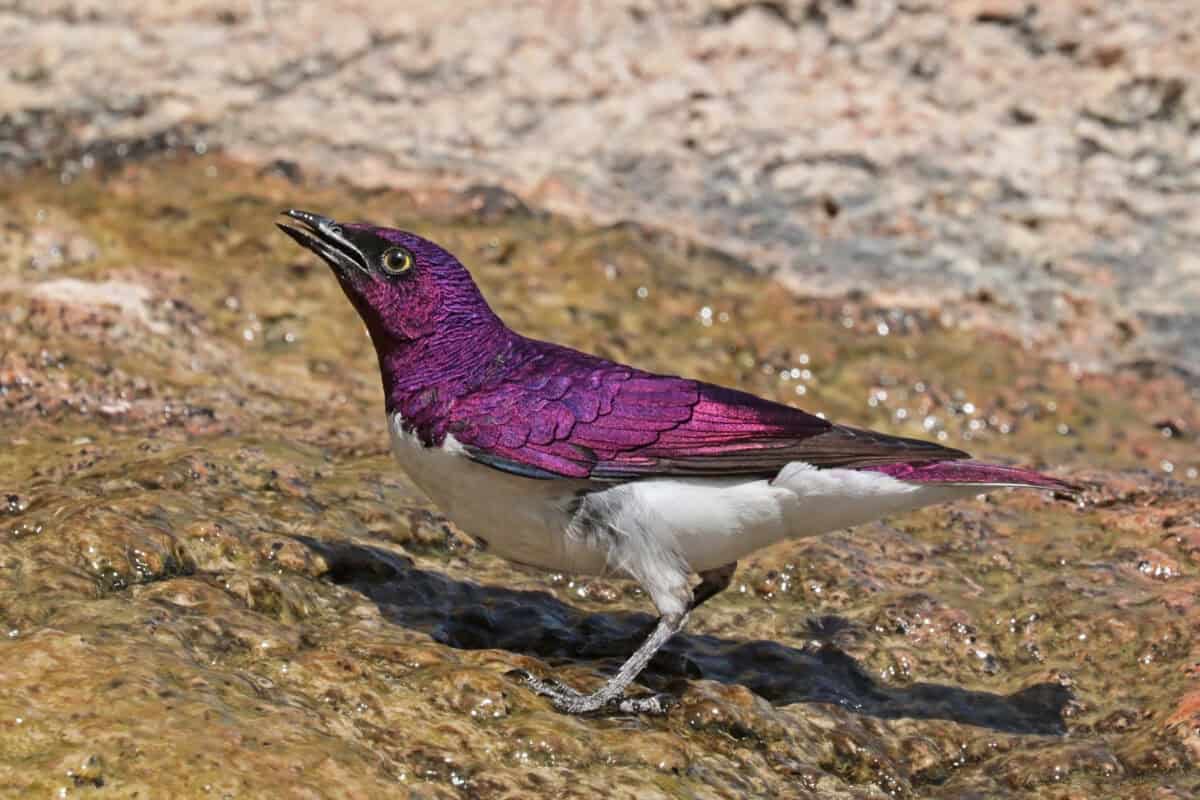
The European starling (Sturnus vulgaris) represents one of North America’s most successful avian invasions, stemming from the release of approximately 100 birds in New York’s Central Park in 1890—part of a misguided effort to introduce all birds mentioned in Shakespeare’s works. From this small founding population, starlings now number over 200 million across the continent. These glossy, speckled birds excel in urban environments due to their dietary flexibility and aggressive nesting behavior. They roost in massive numbers on buildings, communication towers, and bridges, creating spectacular aerial displays called murmurations that can include up to 100,000 individuals. Urban starlings have demonstrated cognitive adaptations, including the ability to learn to open automatic doors and exploit novel food sources. Their success, while impressive, comes at an ecological cost, as they outcompete native cavity-nesting species and cause agricultural damage estimated at $800 million annually in the United States.
American Crow The Urban Intellectual

American crows (Corvus brachyrhynchos) have increasingly moved into urban areas across North America, drawn by abundant food resources and reduced predation risk. These highly intelligent birds possess problem-solving abilities comparable to those of a seven-year-old human child, allowing them to exploit uniquely urban opportunities. Urban crows have been documented using cars to crack nuts at intersections, fashioning tools from urban debris, and even recognizing individual human faces—remembering those who have threatened them for years. They construct nests high in city trees and form communal roosts in urban areas that can contain thousands of individuals. Studies from Seattle have shown urban crow populations increasing at rates of 3-4% annually since the 1990s, while rural populations remained stable or declined. Their adaptability extends to diet; urban crows consume everything from discarded fast food to small rodents, with stomach content analyses showing up to 30% of their urban diet comes from human-sourced foods.
Peregrine Falcon From Cliffs to Skyscrapers

The peregrine falcon (Falco peregrinus) demonstrates one of conservation’s greatest success stories and most remarkable urban adaptations. After populations crashed due to DDT poisoning in the mid-20th century, these raptors have made an astonishing comeback, with urban areas playing a crucial role in their recovery. Skyscrapers and bridges perfectly mimic the cliff faces these birds naturally nest on, while city pigeons and other urban birds provide abundant prey. Peregrines have adapted their hunting techniques to the urban environment, using buildings to their advantage when diving at speeds approaching 240 mph—making them the fastest animals on Earth. Urban peregrines now nest in over 75 major North American cities, with New York City alone hosting more than 20 breeding pairs. Research indicates urban peregrines have higher reproductive success than their rural counterparts, with 2.8 young fledged per urban nest compared to 1.9 in natural settings, likely due to abundant prey and reduced pesticide exposure.
Mallard Duck Masters of Urban Waterways
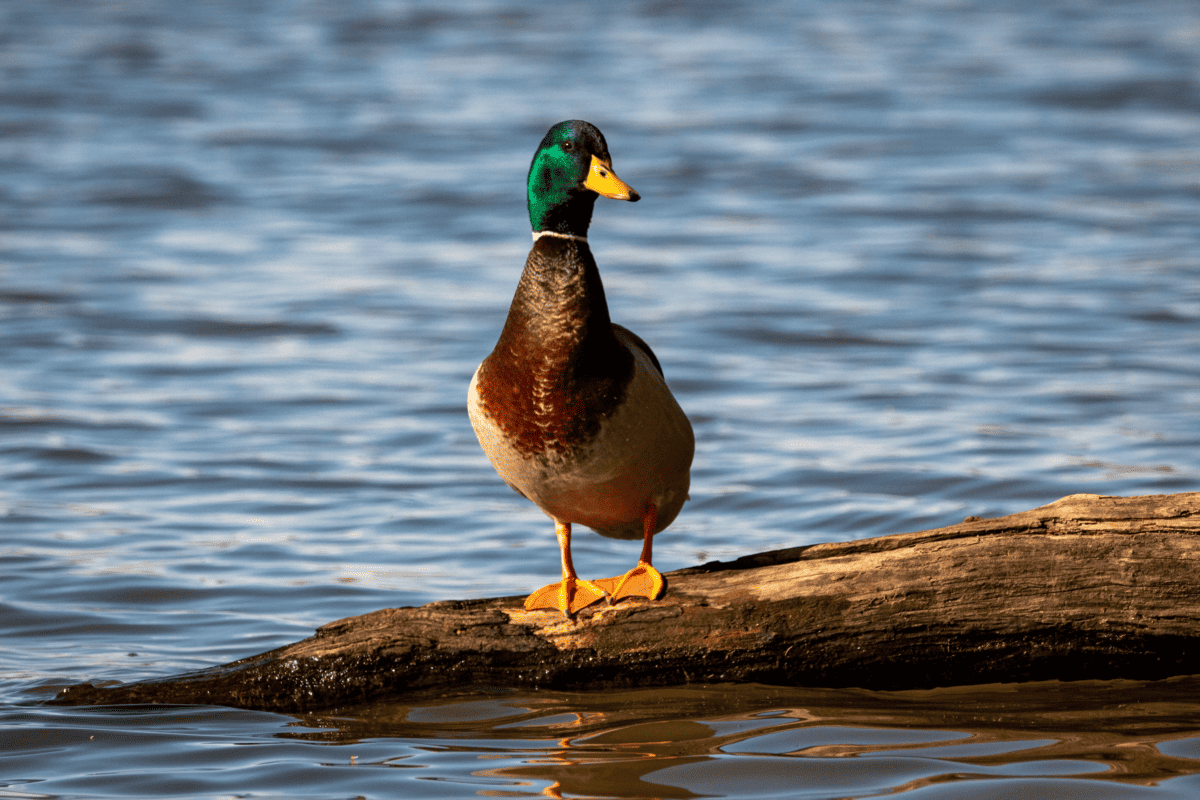
Mallards (Anas platyrhynchos) have successfully colonized urban ponds, lakes, and waterways worldwide, becoming one of the most recognizable birds in city parks. These adaptable waterfowl readily accept artificial feeding from humans, which supplements their natural diet of aquatic plants, insects, and small invertebrates. Urban mallards nest in surprisingly diverse locations, including landscaped planters, rooftop gardens, and even balcony planters, sometimes hundreds of meters from the nearest water. They’ve evolved behavioral adaptations for city life, including increased tolerance for human disturbance and altered migration patterns—many urban mallard populations have become year-round residents rather than migrating seasonally. Research from the University of Manchester found urban mallards have significantly different gut microbiomes compared to their rural relatives, reflecting their diet’s higher proportion of processed foods. Despite these adaptations, urban mallards face challenges, including increased risk of nutritional deficiencies from bread-heavy diets and higher exposure to pollutants in urban water bodies.
Cooper’s Hawk The Suburban Hunter

Cooper’s hawks (Accipiter cooperii) have made a remarkable transition from forest-dwelling raptors to successful urban predators over the past few decades. These agile, medium-sized hawks specialize in hunting other birds, making cities—with their abundant populations of pigeons, doves, and songbirds—ideal hunting grounds. Urban Cooper’s hawks have demonstrated behavioral flexibility, developing specialized hunting techniques around bird feeders and adapting to hunting in fragmented green spaces between buildings. Research from Arizona State University found urban Cooper’s hawk populations in Tucson had nesting densities ten times higher than in surrounding natural areas, with nest success rates of 70% compared to 45% in natural habitats. These hawks build nests in mature urban trees, particularly in residential neighborhoods and parks. Unlike many raptors, Cooper’s hawks show reduced fear responses toward humans in urban settings, sometimes nesting as close as 20 meters from occupied buildings. Their successful adaptation has contributed to their population recovery after historic declines due to persecution and pesticide contamination.
Common Raven The Urban Opportunist

Common ravens (Corvus corax), once primarily wilderness birds, have increasingly colonized urban areas across North America and Europe. These highly intelligent corvids—with brain-to-body ratios comparable to chimpanzees—leverage their problem-solving abilities to exploit urban resources in innovative ways. Urban ravens have been documented using traffic patterns to access roadkill safely, following garbage trucks to feeding sites, and even creating diversions to steal food from other animals or unattended human picnics. In cities like Vancouver and Los Angeles, raven populations have increased by over 300% since the 1980s, with urban territories averaging just one-third the size of their rural counterparts due to concentrated food resources. Ravens construct large stick nests on electrical towers, buildings, and bridges, sometimes incorporating urban debris like wire hangers and plastic zip ties as building materials. Despite their adaptability, urban ravens maintain much of their complex social behavior and extensive vocal repertoire, with over 100 distinct call types documented among city-dwelling populations.
Great Horned Owl The Silent Urban Predator

The great horned owl (Bubo virginianus), North America’s most formidable avian predator, has successfully integrated into urban environments despite its reputation as a wilderness hunter. These powerful owls take advantage of city parks, cemeteries, and even golf courses as hunting grounds, preying on urban rats, rabbits, and other nocturnal creatures. Their silent flight—made possible by specialized feather structures that eliminate turbulence—allows them to hunt effectively even in noise-sensitive urban prey. Great horned owls typically nest in mature trees within urban green spaces but have also adapted to using abandoned buildings, electrical substations, and even large planter boxes on high-rise buildings. Research from the Cornell Lab of Ornithology indicates urban great horned owl populations have increased by approximately 20% since 2000 in many metropolitan areas. Urban pairs maintain territories averaging 70 hectares—significantly smaller than the 250+ hectares required in natural settings—demonstrating the prey density advantages of urban environments. Their presence provides natural rodent control, with a single owl family consuming up to 2,000 rats and mice annually.
Monk Parakeet Exotic Urban Colonizers

Monk parakeets (Myiopsitta monachus), native to South America, have established thriving feral populations in cities across North America and Europe following releases and escapes from the pet trade. Unlike most parrots, which nest in cavities, monk parakeets build elaborate stick nests—sometimes weighing hundreds of pounds—on utility poles, transmission towers, and stadium lights. This unique nesting behavior has facilitated their urban success, as they don’t compete for limited cavity nest sites. Chicago hosts one of North America’s largest populations, with over 200 breeding pairs concentrated in the Hyde Park neighborhood alone. These bright green parakeets have demonstrated remarkable cold tolerance, surviving winter temperatures as low as -20°C through communal nesting and metabolic adaptations. Urban monk parakeets maintain a largely vegetarian diet, consuming seeds, berries, buds, and flowers from landscaped parks and gardens. Their success raises ecological questions, though research has found limited negative impacts on native birds. Their large communal nests do, however, cause occasional infrastructure problems by interfering with electrical equipment, resulting in an estimated $550,000 in annual utility damages.
Red-tailed Hawk The Skyscraper Sentinel
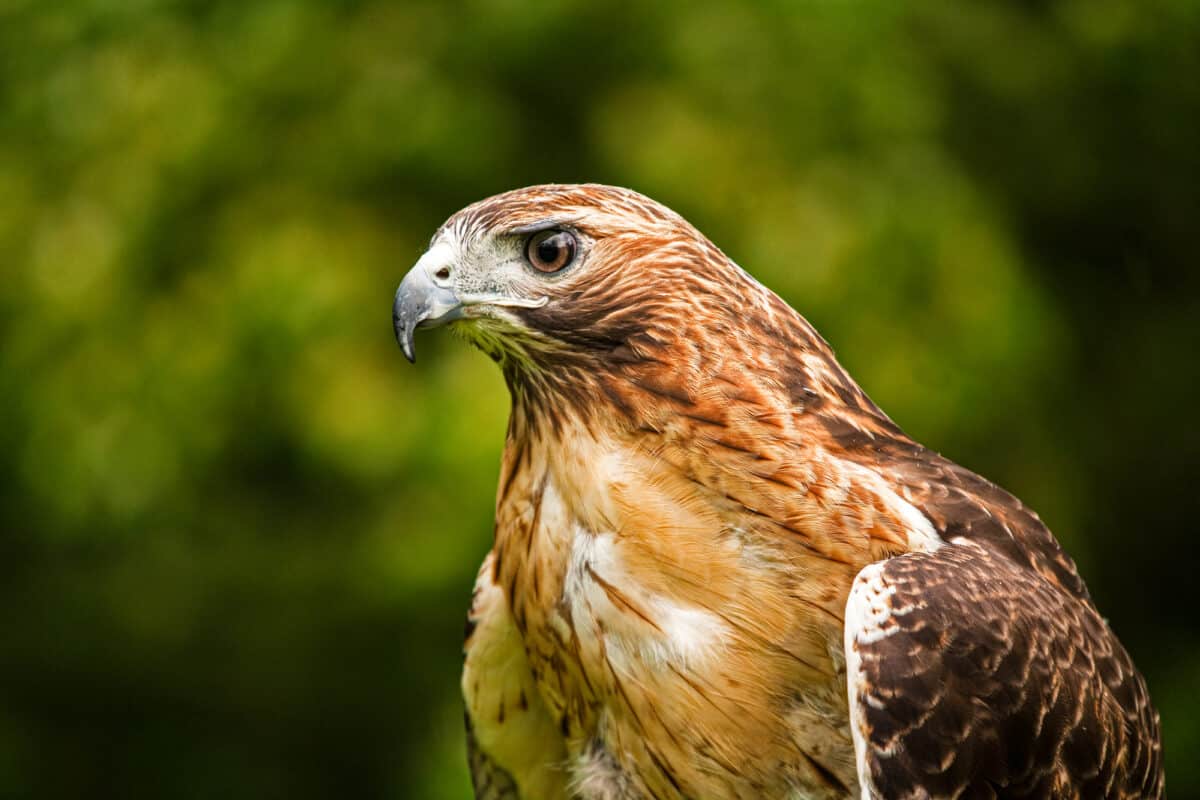
Red-tailed hawks (Buteo jamaicensis) have increasingly colonized urban areas across North America, with famous urban pairs like New York City’s “Pale Male” capturing public imagination and demonstrating these raptors’ adaptability. Urban red-tails take advantage of tall buildings that mimic their natural cliff nesting sites while providing excellent vantage points for hunting. They prey primarily on urban rodents, squirrels, and pigeons, making them valuable natural pest controllers in city environments. Manhattan’s red-tailed hawk population has grown from just three known pairs in the 1990s to over 35 breeding pairs today, according to NYC Audubon monitoring. These hawks have adapted their hunting techniques to urban settings, using thermal updrafts created by buildings to soar efficiently and learning to hunt along urban green corridors like linear parks and parkways. Urban red-tails show altered nesting behaviors compared to rural populations, building nests earlier in the season and incorporating anthropogenic materials like plastic bags, clothing pieces, and even toy stuffing into their nest structures. Research indicates urban red-tails have higher blood lead levels than rural counterparts but demonstrate improved reproductive success due to abundant prey and reduced persecution.
Northern Mockingbird The Urban Vocalist
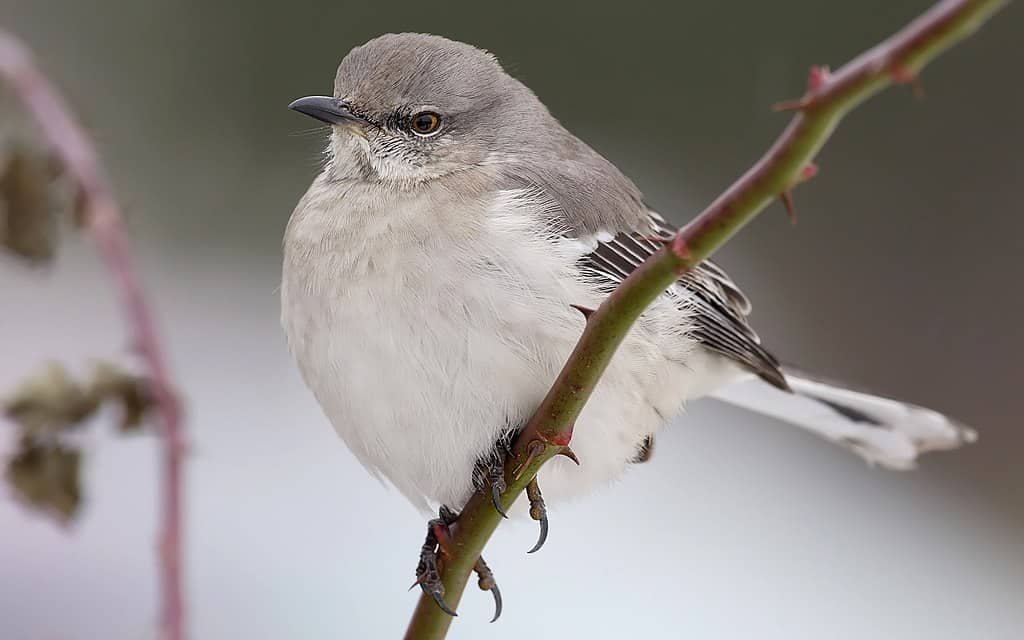
Northern mockingbirds (Mimus polyglottos) have thrived in urban and suburban landscapes across North America, adapting remarkably well to human-modified environments. These vocal mimics are known for their extraordinary repertoire—a single male can learn over 200 distinct song types, including urban sounds like car alarms, cell phone ringtones, and construction equipment. Urban mockingbirds maintain territories year-round, vigorously defending fruiting trees and shrubs in parks, residential gardens, and commercial landscaping. Research from Tulane University demonstrated urban mockingbirds can recognize individual humans who have previously approached their nests, responding more aggressively to these specific people while ignoring strangers—a sophisticated cognitive adaptation to urban living. Their diet has evolved to include urban food sources, with studies showing up to 20% of their winter nutrition coming from exotic ornamental berries planted in city landscapes. Urban mockingbirds build nests on average 2.4 meters lower than their rural counterparts, seemingly adapted to the structure of city vegetation, and they sing more frequently at night in areas with high artificial lighting. Their population density in some urban residential neighborhoods reaches 8-10 breeding pairs per hectare—nearly triple their density in natural habitats.
Conclusion: Urban Birds and Our Shared Future
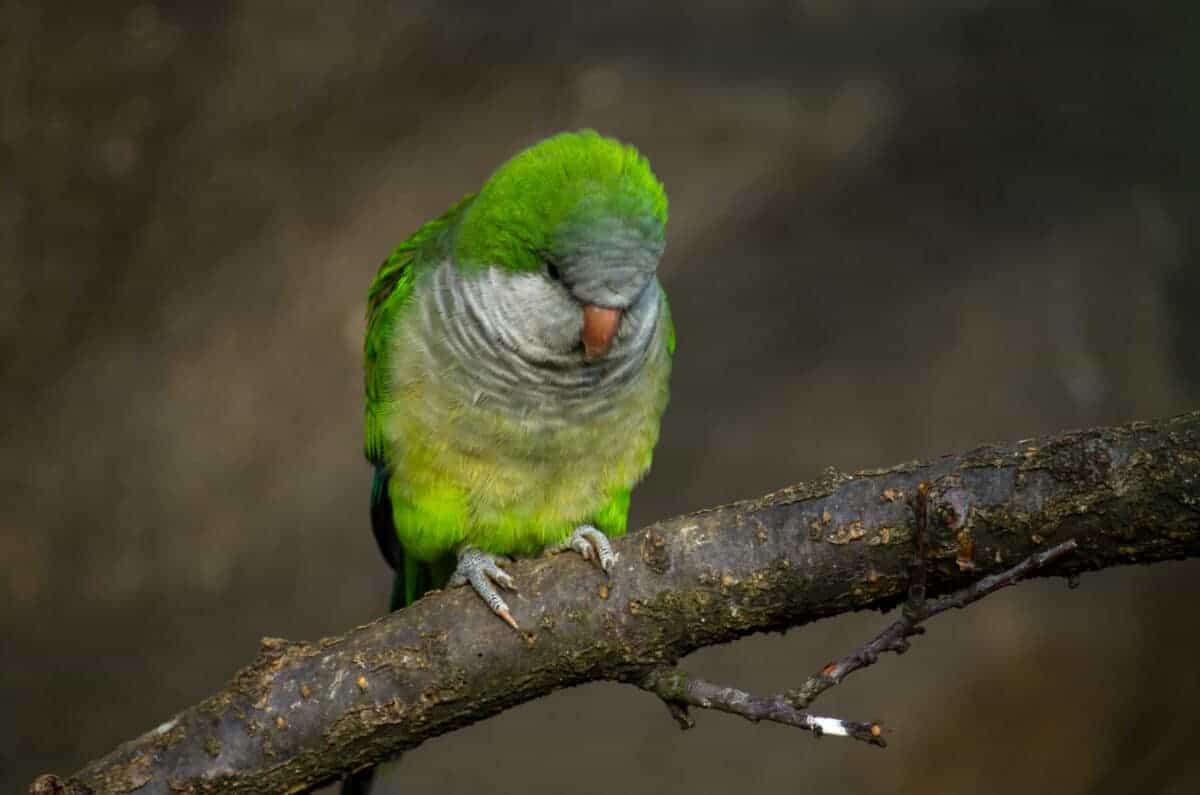
The remarkable adaptability of these 12 bird species to urban environments demonstrates nature’s resilience in the face of human-dominated landscapes. Far from being ecological wastelands, our cities host complex avian communities that have evolved specific adaptations to thrive amid concrete, glass, and asphalt. These urban birds provide valuable ecosystem services—from the pest control offered by hawks and owls to the seed dispersal facilitated by mockingbirds and crows. They also create meaningful connections between city dwellers and wildlife, offering daily nature encounters in otherwise developed settings. As urbanization continues globally, understanding and supporting these adaptable species becomes increasingly important for both biodiversity conservation and human well-being in our shared urban ecosystems. By designing bird-friendly urban spaces with native plantings, water features, and varied habitat structures, we can further enhance these success stories while potentially helping additional species adapt to our changing world.
- How the Grand Canyons Climate Can Change in Just Minutes - August 23, 2025
- 14 Animals That Remember People for Life Even After Years Apart - August 23, 2025
- 10 Biggest Eyes in the Animal Kingdom - August 23, 2025

